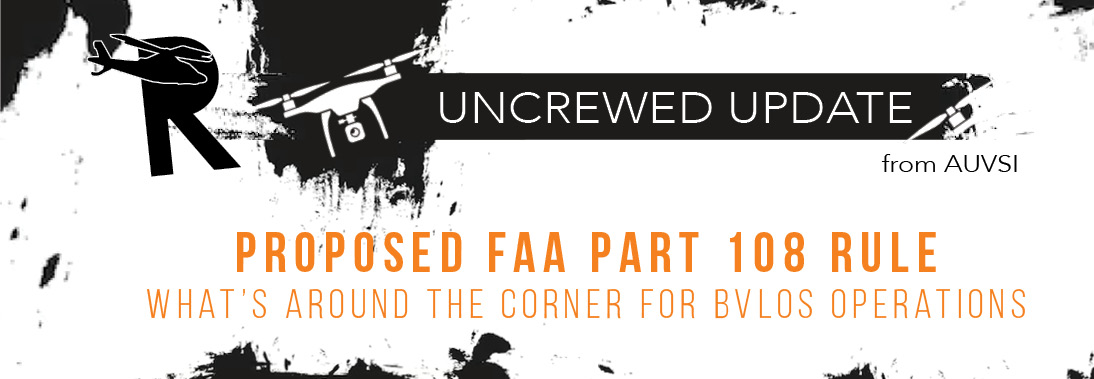|
Nov
13
2025
|
|
Posted 43 days ago ago by Admin
|
|

The FAA’s proposed Part 108 rule marks a turning point for Beyond Visual Line of Sight (BVLOS) drone operations. Moving away from today’s patchwork of waivers, the proposal introduces a standardized framework intended to scale routine BVLOS missions safely and predictably.
At AUVSI, we know Part 108 is foundational for the drone industry. It reflects years of stakeholder dialogue and what we consistently hear from members: regulatory certainty unlocks investment, adoption, and safe integration.
Key Features of the NPRM
-
Support for Broad Use Cases: Explicitly accommodates diverse missions, from public safety and infrastructure inspection to commercial delivery and recreational BVLOS, making the framework inclusive and future-proof.
-
Pathways for Existing Operators: Lacks a clear transition for current Part 107 waiver holders, risking disruption for operators who have already proven compliance. AUVSI is urging a streamlined migration process that recognizes operational history.
-
Impact on Small and Public Safety Operators: Requirements like Safety Management Systems (SMS) and certified personnel may burden smaller entities. Relief for single-person permit operations is helpful, but more proportional options are needed for rural or resource-limited agencies.
-
Automated Data Service Providers (Part 146): Creates a framework for ADSPs to provide traffic management and strategic deconfliction services, a key enabler of BVLOS integration.
Key Provisions in Focus
Among the hundreds of pages, two provisions stand out: right of way and electronic conspicuity (EC). Together, these changes will redefine how drones and crewed aircraft share airspace, and how quickly BVLOS expands across public safety, infrastructure, and commercial use cases.
Right of Way
Today, drones must yield to all crewed aircraft, limiting BVLOS growth, especially near infrastructure or in areas where crewed aviation is sparse. Part 108 proposes a more balanced approach: shielded operations near structures could be prioritized, and crewed aircraft not broadcasting position via ADS-B or EC may be required to yield.
This is a significant shift: from drones always deferring, to shared responsibility where visibility through technology determines access.
Electronic Conspicuity
EC is the linchpin that enables new right-of-way rules. By requiring drones in certain BVLOS operations to broadcast their position, the FAA is creating a foundation for real-time situational awareness across airspace users.
Benefits include supporting detect-and-avoid systems, increasing pilot awareness, and making deconfliction more practical. But implementation raises questions about cost, interoperability with ADS-B and Remote ID, and compliance standards.
By tying right of way to EC equipage, the FAA signals that electronic visibility is the price of expanded rights. For small businesses and public safety agencies, affordability will determine whether BVLOS becomes routine.
Implications for Public Safety
Public safety agencies have proven the value of BVLOS through Drone as First Responder and Tactical BVLOS programs. Yet the NPRM leaves questions about how these models will transition. Without clear guidance, agencies risk losing continuity in established operations.
AUVSI advocates for tailored, proportional requirements that recognize the realities of public safety missions and budgets, ensuring these lifesaving programs continue under Part 108.
Shaping the Future of Flight
The FAA’s proposal is a milestone for BVLOS, but the details of implementation will determine whether it accelerates safe integration or slows it down. AUVSI and our members will continue leading the conversation, providing data-driven analysis, and working with stakeholders to shape a final rule that supports safety, innovation, and equitable access.
For operators, right of way and electronic conspicuity will be the defining issues. For AUVSI, they are at the center of our advocacy to ensure Part 108 delivers on its promise.